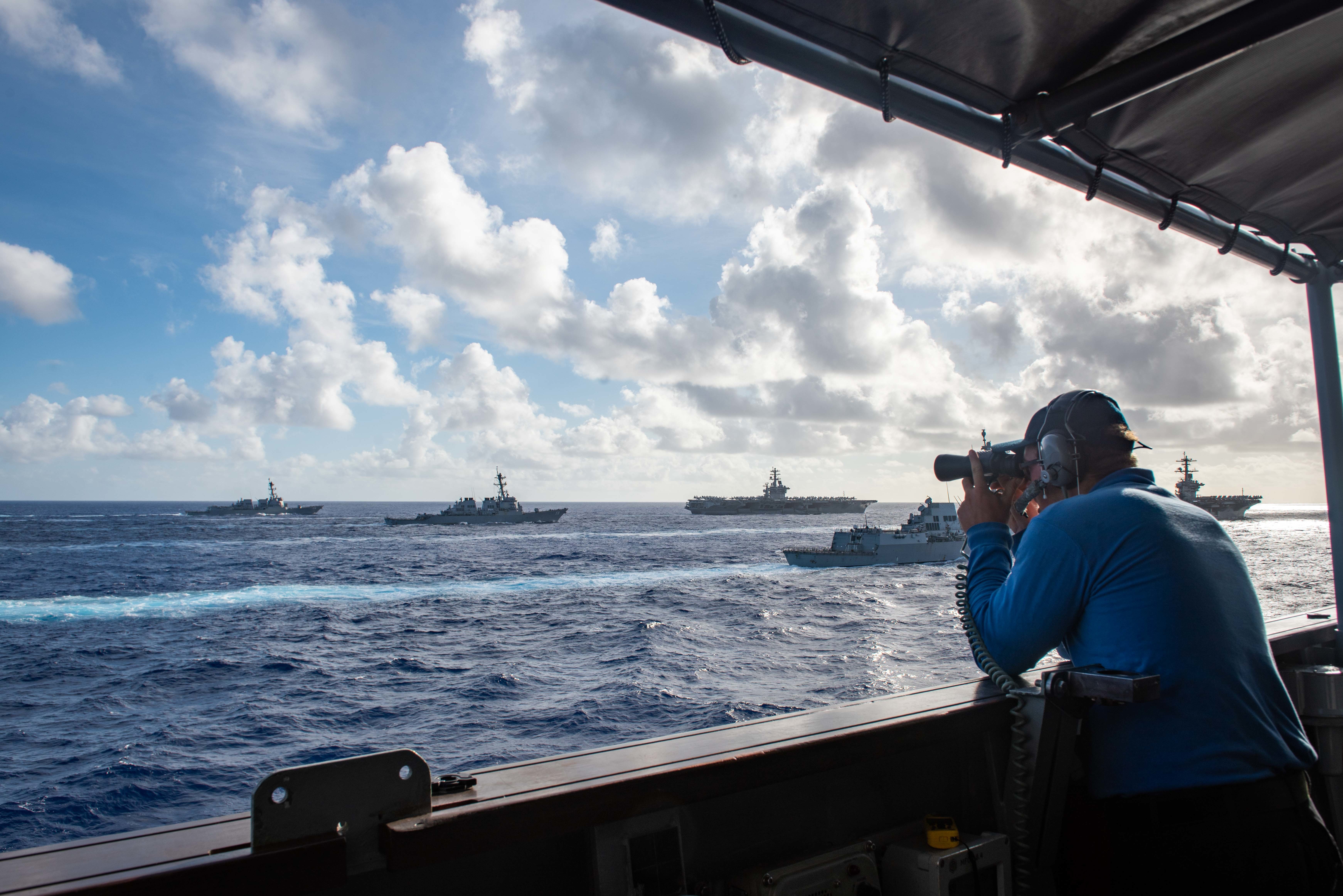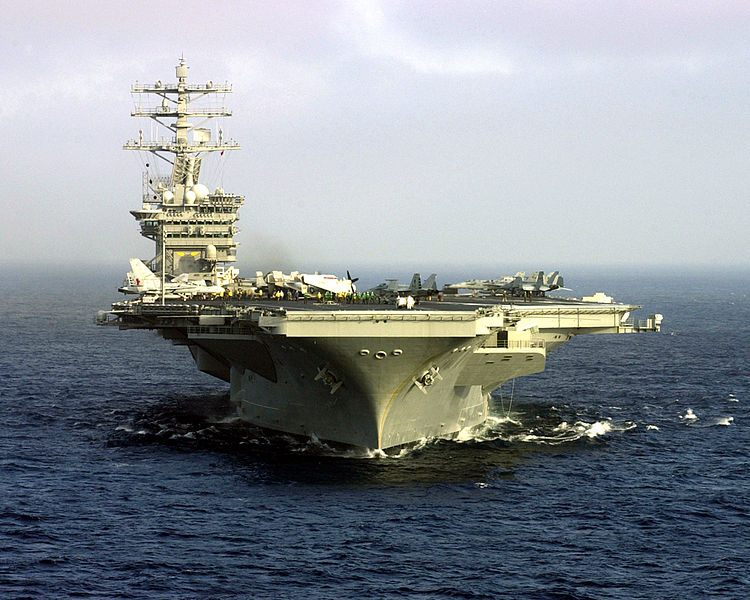

The rescue was aborted in the Iranian Desert when the number of operational helicopters fell below the minimum needed to transport the attack force and hostages out of Iran. Four months later, Operation "Evening Light" was launched from Nimitz in an attempt to rescue the hostages. Naval presence in the crucial Indian Ocean area as tensions heightened over Iran's taking of 52 American hostages. 10, 1979, it was dispatched to strengthen the U.S. During Nimitz' third cruise to the Mediterranean beginning Sept. Following a peaceful deployment, the ship returned home to Norfolk July 20, 1978. Nimitz again sailed toward the Mediterranean Sea Dec. In November 1976, Nimitz was awarded the coveted Battle "E" from Commander, Naval Air Forces Atlantic Fleet, for being the most efficient and foremost aircraft carrier in the Atlantic Fleet.

The deployment marked the first time in 10 years that nuclear-powered ships had deployed to the Mediterranean. Included in the task force were the nuclear-powered cruisers USS SOUTH CAROLINA and USS CALIFORNIA. Nimitz' first deployment began on Jwhen it departed Norfolk for the Mediterranean. Today's crew stands ready, as did the commissioning crew, to answer their nation's call and take their place in America's maritime heritage. Whether its mission is one of defense, diplomacy or humanity, Nimitz will command awe and admiration from some, caution and circumspection from others and respect from all." Speaking to a crowd of over 20,000, the President said in his remarks: "Wherever the United States Ship Nimitz shows her flag, she will be seen as we see her now - a solid symbol of United States strength United States resolve.

Holloway, III, Chief of Naval Operations and Mrs. William Middendorf, II, Secretary of the Navy Admiral James L. Schlesinger, Secretary of Defense the Honorable J. Principal guests included: the Honorable James R. The ship was commissioned May 3, 1975, at Pier 12, Naval Station Norfolk, Va. It was destined to become the largest warship ever. The keel of USS Nimitz (CVN 68) was laid on Jat Newport News Shipbuilding and Dry Dock Company in Newport News, Virginia. In doing so, the aircraft carrier has secured a prominent place in history, just like her namesake, Fleet Admiral Chester W. And by intention or chance, this is exactly what happened.USS Nimitz has answered its country's call many times in response to regional and international crises. The key takeaway here is that if ever there was an opportune time to capture the very best real-world sensor data on a high-performance target in near lab-like controlled settings offered by the restricted airspace off the Baja Coast, this was it. But back in 2004, it was new and untested on the scale presented by the Nimitz Carrier Strike Group as it churned through the warning areas off the Baja Coast. This capability continues to evolve and mature today and will be the linchpin of any peer-state naval battle of the future that the U.S. For instance, a cruiser could fire a missile at a low-flying aircraft that is being tracked by a Hawkeye and an F/A-18 even though it doesn't show up on their own scopes. The data-link connectivity and the quality of the enhanced telemetry means that weapons platforms, such as ships and aircraft, could also fire on targets without needing to use their own sensor data. We are talking about a quantum leap in capability and fidelity here folks. With CEC, the target will remain steady on both platform's CEC enabled screens as they are seeing fused data from both sources and likely many others as well. Whereas a stealthy aircraft or one employing electronic warfare may start to disappear on a cruiser's radar as it is viewing the aircraft from the surface of the Earth and from one angle, it may still be very solid on the E-2 Hawkeye's radar that is orbiting at 25,000 feet and a hundred miles away from the cruiser. This, in turn, provides very high fidelity 'tracks' of targets thanks to telemetry from various sensors operating at different bands and looking at the same target from different aspects and at different ranges. "At its very basic level, it uses the Strike Group's diverse and powerful surveillance sensors, including the SPY-1 radars on Aegis Combat System-equipped cruisers and destroyers, as well as the E-2 Hawkeye's radar picture from on high, and fuses that information into a common 'picture' via data-links and advanced computer processing.


 0 kommentar(er)
0 kommentar(er)
